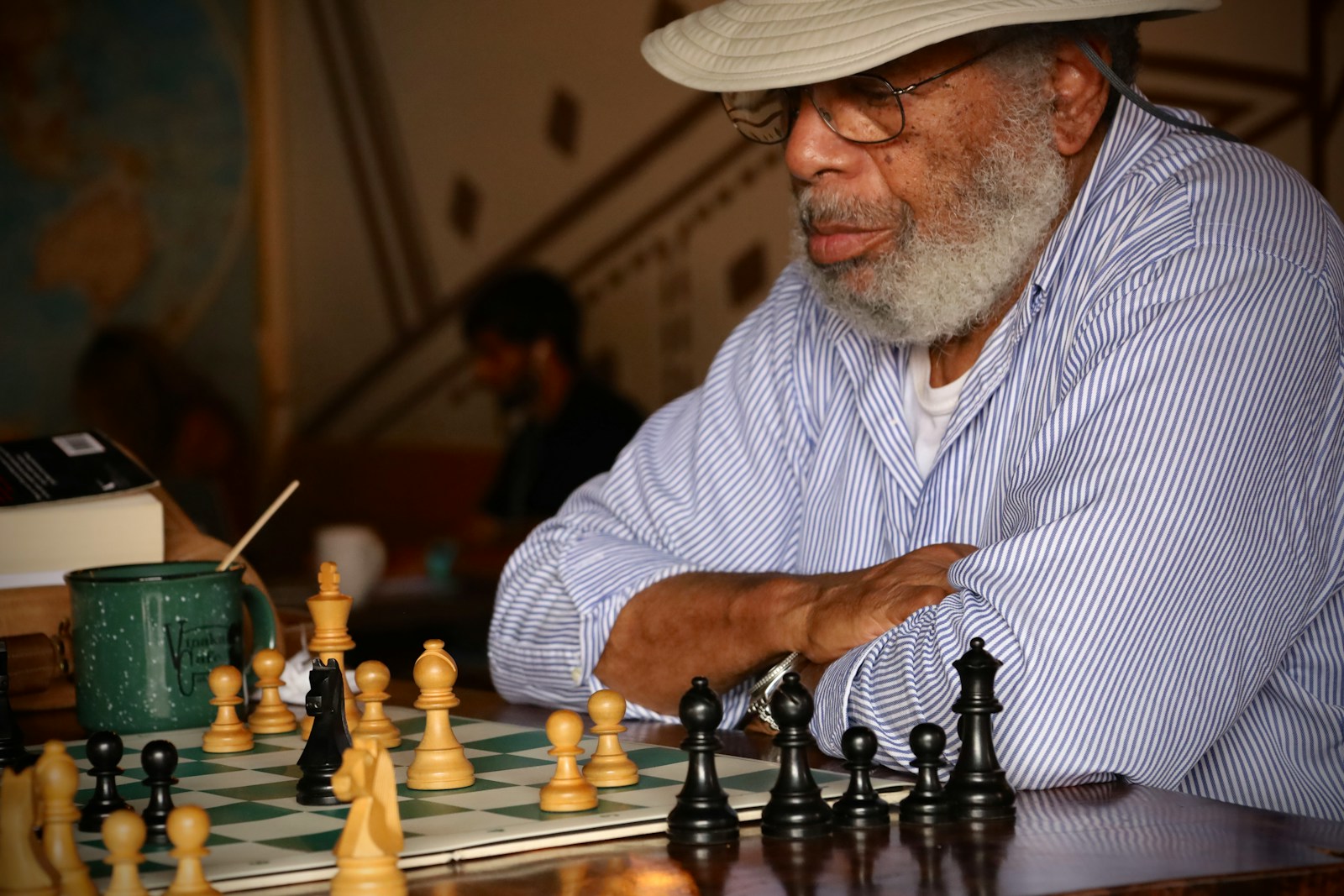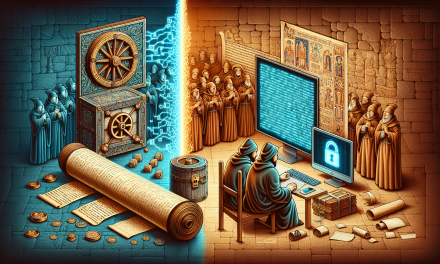Picture this: you’re staring at a chessboard, your opponent’s knight threatening your queen, and suddenly something clicks. That moment when you see three moves ahead, anticipate their strategy, and counter with a brilliant sacrifice – that’s your brain working exactly like a coder’s.
Chess and coding share more DNA than you might expect. Both require you to think in patterns, break down complex problems into manageable pieces, and most importantly, debug your way out of trouble. Whether you’re a complete chess beginner or someone who’s been moving pawns for years, understanding how chess thinking mirrors coding thinking can transform both games entirely.
The Art of Looking Around Corners
When a chess master looks at a board, they’re not just seeing the current position – they’re running mental simulations. “If I move my bishop here, they’ll probably move their queen there, which opens up this attack, but then I could respond with…” Sound familiar? That’s exactly what happens when you write an if-then-else statement in code.
Think of each chess move as a line of code that triggers a response. When you move a piece, you’re essentially writing: “If opponent does X, then I’ll do Y.” The best chess players – like the best programmers – have learned to trace through multiple scenarios in their heads before committing to an action.
Try this right now: look at any chess position (even from a book or online) and try to predict what will happen if the knight moves to that square. Don’t just think one move ahead – think two, three, even four moves ahead. Notice how your brain starts creating little branching pathways? That’s algorithmic thinking in action.
Pattern Recognition: The Secret Superpower
Here’s something that will blow your mind: chess grandmasters don’t actually calculate every possible move. Instead, they’ve memorized thousands upon thousands of patterns. When they see a familiar setup on the board, their brain instantly recognizes it and knows the best response – just like how experienced programmers recognize common code patterns and immediately know which solution to apply.
Take the classic “fork” attack in chess, where one piece attacks two enemy pieces simultaneously. Once you learn to spot this pattern, you’ll start seeing fork opportunities everywhere. It’s the same way that once you understand loops in programming, you’ll spot places where loops can solve problems in the most unexpected places.
The beautiful thing about patterns is they’re transferable. The spatial reasoning you develop recognizing chess patterns helps you understand data structures in programming. The logical flow you learn from chess combinations prepares your brain for understanding how functions call other functions.
Breaking Down the Impossible
Ever looked at a chess puzzle that seemed absolutely impossible? Maybe White needs to checkmate in three moves, but the position looks hopeless. The secret isn’t magic – it’s decomposition, the same skill that makes complex programming projects manageable.
Chess masters don’t try to solve the whole puzzle at once. They break it down: “First, I need to remove the defender. Then I need to create a threat. Finally, I need to deliver checkmate.” Each step becomes its own mini-problem to solve, just like breaking down a big coding project into smaller functions.
Consider the famous “Smothered Mate” pattern. The goal is to checkmate the enemy king using only a knight, but the king seems safely protected by its own pieces. The solution requires thinking in steps: first sacrifice the queen to force the king into a corner, then use a knight check to force the king to hide behind its own pieces, and finally deliver mate with the knight. Each step seems counterintuitive on its own, but together they create an elegant solution.
AI in Chess and Coding
Some of the most famous breakthroughs in artificial intelligence came directly from chess. When programmers first tried to teach computers to play chess, they had to figure out how to make a machine “think ahead” – and that challenge gave birth to many of the algorithms we use today.
The minimax algorithm, which helps computers evaluate chess positions, works by assuming both players will make their best possible moves. It explores all possible moves several turns deep, then chooses the path that leads to the best outcome. This same type of thinking powers everything from game AI to recommendation systems that suggest what movie you should watch next.
But here’s what’s really fascinating: when chess programs became incredibly strong, they didn’t replace human chess thinking – they revealed new patterns that humans had never noticed before. Sometimes the computer’s “weird” moves taught human players entirely new ways to think about the game.
Debugging Skills Off and On the Board
Every chess player knows that sinking feeling when you realize your brilliant attack has a fatal flaw. You’ve been calculating for ten minutes, you’re sure your plan will work, and then – disaster. Your opponent plays a move you didn’t see coming, and suddenly your “winning” position becomes a losing one.
This is debugging at its purest. Just like when your code produces an unexpected result, you need to trace back through your logic step by step. “Wait, I assumed they would move their queen, but what if they don’t? What if they block with the bishop instead? Did I account for that pin on my knight?”
Frequently Asked Questions
Chess enhances programming skills by training algorithmic thinking, pattern recognition, and logical problem-solving. Chess players learn to think ahead, trace through multiple scenarios, and break down complex problems into manageable steps—all essential skills for coding. The spatial reasoning developed in chess also helps with understanding data structures and code architecture.
Both chess and coding require pattern recognition, logical reasoning, analytical problem-solving, strategic planning, and debugging skills. They both involve breaking down complex problems into manageable components, anticipating outcomes through conditional thinking (if-then logic), and systems thinking where changes affect the entire structure. Additionally, both activities enhance spatial reasoning, memory, and attention to detail.
The best chess improvement comes from analyzing your mistakes – looking at games where your plans went wrong and figuring out exactly where your thinking broke down. Was it a tactical oversight? Did you misjudge the position? Did you rush your calculation? This diagnostic thinking is identical to debugging code: isolate the problem, understand why it happened, and build better habits to prevent it next time.
Here’s a practical exercise: next time you play chess (whether online, with a friend, or even against a computer), keep a simple log. After each game, write down one move you wish you could take back and one move you’re particularly proud of. Then try to figure out what the difference was between your thinking process in those two moments.
Whole-Board Thinking
Beginning chess players often suffer from “tunnel vision” – they get so focused on their own attack that they miss their opponent’s counter-attack. Sound familiar? It’s the same problem that causes bugs in programming when you focus so intensely on making one part of your code work that you forget how it affects the rest of the system.
Advanced chess players learn to maintain what’s called “whole-board awareness.” Even while calculating a complex tactical sequence, they keep track of what’s happening on the other side of the board. They notice when their king becomes unsafe, when their pieces become undefended, when their position develops weaknesses.
This is systems thinking at work – understanding how all the pieces of a complex system interact with each other. In chess, moving one piece affects the entire position. In programming, changing one function can have ripple effects throughout your entire codebase.
Transferable Brain Benefits
The beautiful thing about chess is that it makes abstract thinking concrete. When you visualize how a knight moves in an L-shape, you’re training the same spatial reasoning skills that help you navigate complex data structures. When you calculate whether a pawn can reach the end of the board before your opponent’s pieces can stop it, you’re practicing the same mathematical reasoning that helps you optimize algorithms.
Start small. Pick one simple chess pattern – maybe how pieces work together to attack a target, or how to create a “battery” with two pieces on the same line. Practice until recognizing that pattern becomes automatic. Then notice how this same kind of pattern recognition starts showing up in other areas of your thinking.
The goal isn’t to become a chess grandmaster or a programming expert overnight. The goal is to exercise your brain’s pattern-matching, logical reasoning, and systematic thinking muscles. Whether you’re debugging a chess position or debugging code, you’re training the same fundamental cognitive skills: the ability to see connections, anticipate consequences, and solve problems one logical step at a time.
Every chess game is really a conversation between two problem-solving minds, each trying to outthink the other through pure logic and creativity. Every coding project is the same kind of conversation, except you’re having it with a computer. Master the art of thinking ahead, and you’ll discover that both games become not just more winnable, but infinitely more fascinating.








